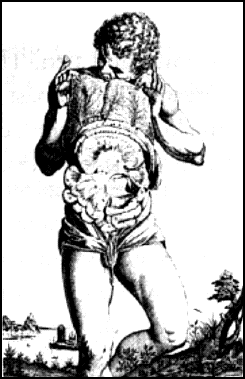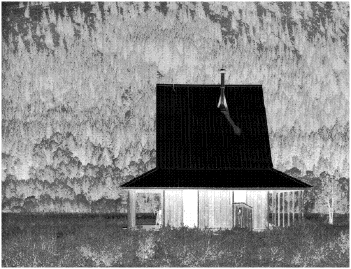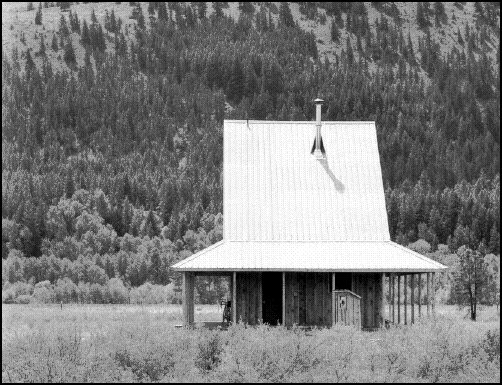Location of
The Soul
<New and Selected Essays
Richard Selzer
(Picador USA)

Fact is, Selzer liked writing so much that a few years ago he gave up being a sawbones, and has since put out ten or so volumes. The Exact Location of the Soul is a compilation, and includes some of the essays that touched us so many years ago; like the one about his diabetic patient who --- despite their best efforts --- will have to lose her leg: "We could no longer run ahead of the gangrene. We had not the legs for it. There must be an amputation in order that she might live --- and I as well." And with a typical Selzer aside, "It was to heal us both that I must take up knife and saw, and cut the leg off."
Now is the day of the operation. I stand by while the anesthetist administers the drugs, watch as the tense familiar body relaxes into narcosis. I turn then to uncover the leg. There, upon her knee-cap, she has drawn, blindly, upside down for me to see, a face; just a circle with two ears, two eyes, a nose and a smiling upturned mouth. Under it she had printed SMILE, DOCTOR.
There are twenty-six essays from Selzer's many years of writing, including one on AIDS in Haiti, a disquisition on the skin, another on baldness, a look at the tools of a surgeon, and the styles of different surgeons (there is one in New Haven who had this thing about navels --- couldn't perform surgery on the abdomen without excising it), letters to young surgeons, questions on brain death, and tales of growing up in Troy, New York (with a father who was what they then called "a family doctor.")
It's good writing, most interesting --- although sometimes Selzer, like Shakespeare, gets so caught up in his words that you want to grab him and take a scalpel to his prose and cut some of those colorful tumors away: like this, comparing medicine to the priesthood,
There is the endless harsh novitiate of training, much fatigue, much sacrifice. At last one emerges as a celebrant, standing close to the truth laying curtained in the Ark of the body. Not surplice and cassock but mask and gown are your regalia. You hold no chalice, but a knife. There is no wine, no wafer.
Or this, describing a black man from the 18th century who would slowly, during the course of his life, turn white:
Think, if you will, upon one Henry Moss. In Goochland County, Virginia, sprang he, black as an eggplant, from the loins of his mother and father in the otherwise unremembered year of 1754. Farmers his begetters were...
This neo-biblical inversion of phrase, and the biblical phraseology, along with the overcooked metaphors (most eggplants are dark purple, not black) is more than a little offputting.
However, when Selzer gets down to facts --- what actually goes on in the operating room, what his father was like, what happens in a butchering plant, what goes on in the mortuary --- his words are precise, to the point. Indeed, in this last essay, "The Corpse," one might complain that they are a bit too precise.
When he writes about the trocar --- the mortuary equivalent of a vacuum cleaner hose --- being jammed into your once lively body, "two inches to the left and two inches above your navel is the place of entry (Feel it on yourself);" and then goes on quite smartly, too smartly, perhaps, to explain exactly about the goop is that's pumped from this flesh-and-blood that, although it may not now look like much, still, it was a thing we once lived in, cared for. The trocar and the gunk it pulls out of us is described (what it looks like, what it smells like) with such fidelity that at one point you are tempted, as I was, to hurry on to some other chapter --- to get back to that suddenly quite attractive overwritten chapter on, say, Henry Moss of Goochland County --- just so we won't have to think about (we don't want to know) what they are going to be doing to us with that damned trocar that we didn't even ask about in the first place, thank you very much.
Buddha
Book
Abraham Rodriguez
(Picador USA)
Then he goes off to find his friend Dink so they can draw up a comic book ("The Buddha Book") about the murder, print it up there in the high- One night smoking dope together in their hideaway, Jose and Dink agreed that they will only do comics that are real, honest and true --- thus, the Buddha. However, after snuffing Lisa, when Jose goes to find him, Dink has disappeared. He's off with Anita, making love. Well...it's probably more than what you and I might call making love. She's working him over in the alley with her pistol: "I just have to decide," she said. "Do you mean more to me alive or dead?" "I work better alive. Dead I'm not too good." She grinned. Came close. Pressed the gun against his neck. "She'll tell me what to do." "She who?" "Carlotta, Dinky. My gun is named Carlotta. She bites liars." "Sorry, Carlotta. Whass Carlotta sayin then?" "Carlotta says knees, Dinky. On your knees." She pushed him down. Gun to temple. Kicked away a two-by-four with a brush of her sandal. "I like how you look. All pretty and scared." "I ain't scared." "You ain't hard no more, either." "This don't bone me much." "Who cares if you get sprung? You gotta get me off. Thass what I would worry about if I were you. Okay, Slinky?" "Okay." "Thass what I like. A real responsive lover." She pulled down her panties. Black lace. "Munch," she said. Pressing him deeper. "I'll let you know if you pass." Munch. I'll let you know if you pass. Whew. Later, Anita takes him home, gets him in the sack, ties a stocking around his neck, and when they get close to, umh, the magic moment, she pulls it tighter and tighter until he blacks out. Dink may well be concerned about surviving because Anita is also concerned. About her reputation. As she tells him after their breath-taking night of bliss, "There's my career to consider. I just can't be stopped right now that I'm almost gettin there." "Gettin where?" "I'm the first Puerto Rican female serial killer," she said. Dink gripped a bit of parapet for support. Author Rodriguez has a way with dialogue, and his plot-line ain't no slouch, either. The older folks --- Mr. Taylor, the astronomy teacher, Jose's step-father (straight-arrow Assistant Principal), Jose's distraught mother, the High School Principal who is nuts about Luis Muñoz Marín (the first Puerto Rican President) --- don't make out so well; I mean, they come on more as caricatures than characters. But Dinky and Anita and Jose and even Lucy --- now stuffed in her body bag --- are true-to-life, juveniles with attitude, who have something to teach us about growing up in the present-day ghetto, getting laid, stoned, partying, making it from day-to-day...barely surviving. Just when you thought it was safe to go into the streets of New York...
<Inspiration for the
Classic American
Getaway
Dale Mulfinger and
Susan E. Davis
(Taunton)

Some use logs, some use 2x4s, some use galvanized steel. Some are elegantly sited; others are just out there in the country somewhere. And the photographs as so luscious that you want to move in tomorrow.
There are some of reconstructed old barns. Several look like log cabins (complete with rainwater barrel). In the Blue Ridge, Bernard Flippin used logs salvaged from a falling-down tobacco barn. In Montana, Louis Shelden got 113 acres (cost him $2, total)...and built a two-story cabin overlooking Alpine Gulch.
One of the authors --- Dale Mulfinger --- got an inexpensive lot in Wisconsin, on a lake, put in a cabin with loft, ceiling-to-floor windows, what he calls a "minimalist" structure.
Thomas Blurock's cabin looks out over Paradise Valley in Montana. He's an architect, but he said that in his shack, "nothing is the right size:" the windows and doors are too wide, tall, or high for an 850 square foot log cabin. It's gorgeous.

My favorites are the ones that are simple, rustic, nothing fancy --- like the one my dad and I visited three or four times a year [not featured here] in Nassau County, Florida, at Seymour's Point.
Gus Lowenstein lived in Jacksonville, ran an old furniture store there, but his heart was out in the scrub-pine country. He built his shack out of scrap loblolly for the walls and floor, corrugated steel for the roof, oak studs, none-too-straight, to hold it up off the ground. (That gave the fleas, ticks, and hounds and skunks a place to hang out; it also kept the house from flooding when the nor'easters blew through).
At night we used the front porch for sleeping in the cool; during the day, you could perch on the bamboo swing-chair and watch the Nassau River flow by. There was no electricity, but we had Coleman lamps and flashlights. For water, there was ice cold branch-water --- that's what Gus and my dad and their friends used for their tall glasses of whiskey. There were screens on all the doors and windows, else the no-see-ums would come in and eat you alive.
It was on the front porch, one morning, when I had just woken up, back then on that sweet-moss morning, that I had my first vision --- the big one, about time, and the river, and the meaning of life. You remember.
The Nassau River, at peak tides, could run 8 - 12 knots. The fishermen around there --- we called them "crackers" --- knew the tides, most often didn't fight them: you went out on the low tide, came in on the high. But that day Billy-Joe Turner, from down the river came past on his way to the marshes in his boat. He was using an old five- Billy Joe was heading right into the flood tide. He was going out at exactly the speed the tide was coming in. The river wasn't very wide there, mud-flats on one side, Seymour's Point on the other. I could hear the motor going, putt-putt --- see Billy Joe in the back, sitting there huched over, in his muddy coveralls, with his old straw hat. I knew something was happening --- I could see it, the wake, the boat bobbing a bit. But Billy Joe wasn't moving. For the full twenty minutes I watched, he made scarcely any progress at all. Sometimes he would head closer to the shore, and forge ahead, and then he'd go further out in the stream, and fall back again. We watched, me, and the sun, and the cowbirds and the jays, and the hounds --- but even then, me not being more than twelve or thirteen --- I knew, as we all come to know, sometime in our lives, that his journey, whatever journey it is, was something special. We may think we are going somewhere, but the truth is that our journey may well be something else. Billy Joe, sitting there, bobbing in the wake, moving, moving...and all the while not moving at all --- making that endless journey, the one that all of us will make someday, if we haven't already.

--- L. W. Milam